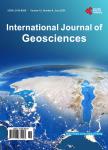Characterizing Lake Bottom Sediments Using Marine Geophysical Tools
Characterizing Lake Bottom Sediments Using Marine Geophysical Tools作者机构:King Abdulaziz City for Science and Technology Riyadh KSA University of Missouri for Science and Technology Rolla USA
出 版 物:《International Journal of Geosciences》 (地球科学国际期刊(英文))
年 卷 期:2019年第10卷第3期
页 面:328-350页
学科分类:1002[医学-临床医学] 100214[医学-肿瘤学] 10[医学]
主 题:Marine Electrical Resistivity Side Scan Sonar Characterize Sediments Water Depth Fractures Missouri
摘 要:Missouri is a state with rich karst terrain. Geotechnical evaluation of foundation design for bridges and dams requires an understanding of the characteristics of subsurface geological environment, including sediments, bedrock and benthic habitat. It is crucial that the community empowers itself with the knowledge of the karst system’s characteristics in order to potentially use it as a source of water and drainage, but also to avoid the disaster of building constructions too close to vulnerable land on top of massive karst caverns. Electrical resistivity tomography profiling (underwater cables), and continuous resistivity profiling (towed cable) surveys were conducted to characterize the lake sediments (rock and soil) beneath the man-made Little Prairie Lake, in Central of Missouri State, United States. Electrical resistivity (with marine cables and towed cable) was used to determine variability in the lithology and thickness of sediments (soil and rock) beneath the lake with conjunction of echo sounder in order to calculate water depth. Side scan sonar was used to map the variations in the lithology/nature of exposed lakebed sediments and to locate the potential hazard of trees. On land, electrical resistivity tomography was used with multi-channel analysis of surface wave method to determine sediments, joints, and the depth of bedrock. Analyses of the acquired data revealed the location and orientation of the original stream channels (prior to the construction of the earth fill dam). Underwater electrical resistivity tomography and continuous resistivity profiling determined joints, sediments, and bedrock underneath water bodies. Integrated marine geophysical tools help to evaluate the subsurface prior to any construction project (dam or bridge), are useful in determining the characteristics of lithology (fractured rock, intact rock and soil), and make it possible to map benthic habitat and the submerged potential hazards of trees on the lakebed as well as accura



